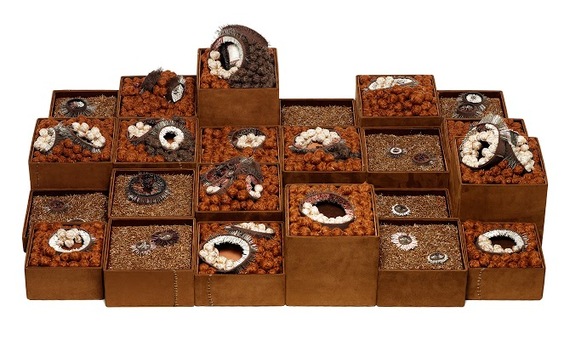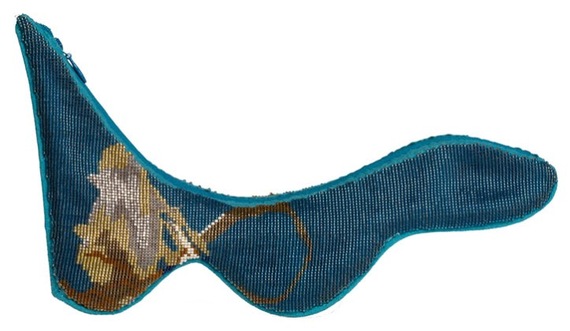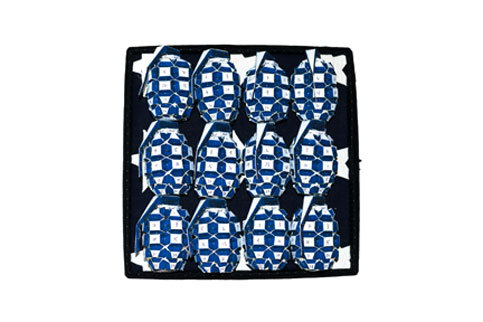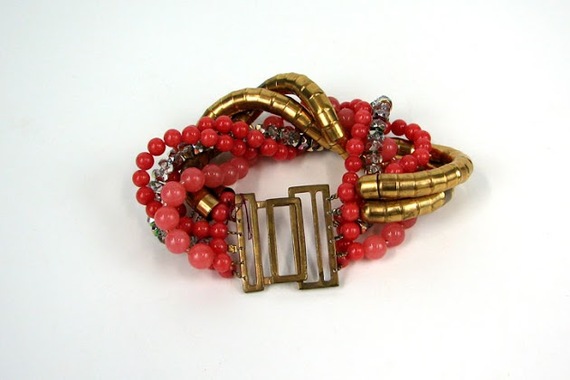Artists and brothers Steven and William Ladd, are collaborators on a body of work manifested in the realm of reconstructed existence.
The brothers, who hail from St. Louis, Missouri and now live and work in New York City have been working together for the past sixteen years. They recently transformed their hand-crafted piecework into a participatory communal space at the Belger Arts Center in Kansas City, Missouri on September 5. These boxes, of varying handheld sizes covered in Ultrasuede and filled with trinkets and sifted remnants of a former belt factory reveal a cacophony of childhood memories. At Belger, the piece entitled Ant Infestation was created from an actual childhood event when the brothers discovered a LEGO box swarming with ants with a subsequent full household infestation.
Choreographed with precision these performances are in fact de facto installations. The audience first stands around towers of enclosed boxes that are taken apart one by one by Steven and William, then carried forward and resurrected in an entirely new format before lids are opened, revealing a blaze of tiny collected and created objects that threaten to burst out of their towers.
There are also pieces at Belger that correspond to the performance work, each of a unique color palette reminiscent of Louise Nevelson's own monochromatic sculptures. This becomes an experience in the round for the audience, viewing ideas and singular objects on floors, walls and pedestals.
The idea of bearing witness to the Ladds' process is enlightening. Engaging with the artists and their work on multiple levels the audience serves as both observer and participant. This idea becomes a springboard for a wealth of ideas beyond objects and craft.
Their library of materials, shapes and forms gives their audience license to imagine what such an event must have been like and this imagining is the soul of their practice. Although nothing is extraneous in their work, and every bead, box, stitch and movement in their silent performance is accounted for, what they're really sharing are the repercussions of these memories. Their reaching back into the past allows for thoughts of the future.
On a larger and more philosophical scale, these actions proffer social and political implications. Their live action presentations uncover a more profound sensation of what is occurring in the world around us by inviting us to witness a live-action event.
There is a parallel to their work and how we, the audience, fit into this idea. In a world of expanding global populations I see Steven and William, standing over their boxes, in control of each successive movement as a nucleus to trigger ideas of both globalization and re-use. They incorporate organic and mechanical perspectives into their work that are vertiginous in concept and design. It shares a documentation of population and sprawl as Man and Nature fight for co-existence.
The take-away is an increased understanding of ever-migrating populations and how they affect their environments. Towering over their newly minted land mass, the Ladds come to exist as antagonists to a natural setting. Their exploration of art and theater imparts awareness of the communal space, successively regulating one rhythm. Ideas of critical mass can be gleaned by looking inside these boxes bursting with objects, threatening to take over their space.
Steven and William are conservators of their past, not necessarily archiving memories, but enabling other uses for these artifacts.
These are heady ideas and rather than tackling such enormous subjects head-on (the Ladd Brothers included) chip away at these issues one idea at a time. Socially-engaged art practices, while currently popular in our lexicon, have more important motivations that address day-to-day problems with global solutions which anyone can simulate in their own lives.
Upcoming shows for Steven and William include the Parrish Art Museum on October 26 with 200 new works along with the continuation of an ongoing teaching project called a Scrollathon. It's an engagement project using recycled materials working with kids in New York City schools and women from the Rikers Island prison system.
Traditional storytelling is now open to reinterpretation. The focus returns to the user, those who witness the performance and to those who participate in the Scrollathon. It is a dynamic of the socially-engaged matrix; memory, collection, preservation, authenticity and accessibility harvested from this system of performances and stand-alone objects.
There is symbolism throughout Steven and William's practice that asks bigger questions, if you are so willing to consider them. And looking beyond these expertly crafted objects, elegantly presented, it is worth the trouble to look beyond their surface beauty.




